2003
Mnemonically Delineating Veracity e2800b
sentences 3797
definition of Quondam
2003.01.09 15:58
Re: on CR tonight 2003.01.08
I didn't mean to dismiss Holl, rather relate what I saw last night. Holl's recent MIT dorm may indeed have led to his team's final design, but I wouldn't discount the contributions of all four architects combined. Also, let's not forget the buildings Arquitectonica built/designed in the early 1980s. I believe Bernardo Fort-Brescia was the first architect I ever saw on TV.
2003.01.10 19:02
Re: the dead end of urbanism as we know it
Urbanism
Architecturism[?]
Spacism[?]
Check out Le Corbusier's plan for rebuilding Berlin (1958, a few years before the wall) at the end of volume 7 of the Oeuvre Complete. In retrospect, it is almost bizarre in its intentions. Note the reenactment of Chandigarh's Great Assembly next to the Reichstag! And the gigantic pronged towers scattered in the east. Urbanism, architecturism and spacism all in one plan.
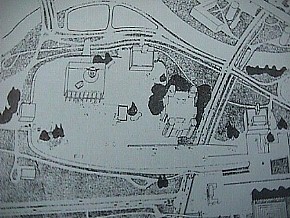
It's funny. I really like this plan, and would love to see it executed, but not at the cost of losing Berlin in the process. If Disney, for example, ever wants to (again) do a great thematic 'FutureTown' (they actually called it TomorrowLand, didn't they?) they should simply enact this plan, and maybe put a big wall around it. I think I'd even like to live there. A kind of beyond virtual Berlin, like a new double Berlin, again.
And here's something that's really interesting in its obscurity. Remember all those little sketches depicting bad modern building design that Leon Krier used to draw as contrast to his 'good' designs? I'm betting big money that Krier actually used the axonometric of Le Corbusier's Berlin plan (OC, vol. 7, p.234) as 'inspiration'. The 'lightening-bolt buildings just south of the Tiergarten are a dead give-a-way. Now I know why I always thought those sketches were actually the best buildings Krier ever designed.
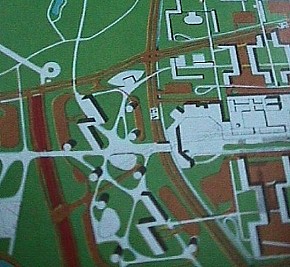 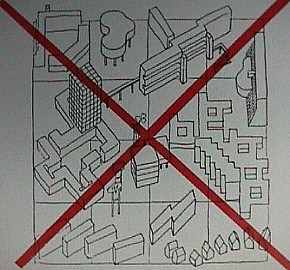
2003.01.14 11:20
Re: FW: essay on gehry
We discussed 3D CAD surface 'play' as virtual sculpture.
030121a Acropolis Q site plan
3392ii01
030121b Ottopia plans
2226i11
2003.01.22 14:41
Re: Favorite Artist?
John Doe, with yourself being your favorite artist, does that then explain why you prefer content not being the overriding element of art?
2003.01.23
ideas
3. reenact Kahn's Philadelphia via (enlarged) Campo Marzio. Kahn's City Hall + surfaces.
5. Warhol/Kahn at Furness.
030207a IQ0 plans
2141i01
2003.02.08 12:16
aesthetics preferences
Paul wrote:
Architects don't generally proceed from philosophical premises, but rather rationalize their aesthetic preferences after the fact.
Steve wonders:
If this is true (and perhaps Paul can verify this himself), then is it because of the way architects are taught?
My own architectural education began in 1970, when, as a freshman in high school, I used to read Fletcher's A History of Architecture on the Comparative Method during free study hall periods. Repeated visits to the decrepit Whitemarsh Hall during the same time added 'hands-on' lessons--Whitemarsh Hall allowed me to better envision the distant Kedleston Hall, my favorite building (plan) back then (as illustrated in Fletcher--English Renaissance rocked, in my opinion). By my senior year in high school (1974) I had read Complexity and Contradiction in Architecture. The summer before going to 'architecture school' (1975), I read The Fountainhead and The Architecture of Humanism, thus my aesthetic preferences were pretty well informed before my 'official' architectural education.
In retrospect, I'd say it isn't so much personal good taste that leads to good design(ing), rather it's a knowledge of (the history of) good taste that leads to good design(ing).
Strange, odd, and even funny how now, more than anything, it has, for me at least, all become virtual.
2003.02.12 12:33
Re: plagiarism
Regarding architecture and plagiarism here's a short exchange from DESIGN-L 3 August 2001:
lauf-s wrote:
See how the Frank Lloyd Wright's Solomon R. Guggenheim Museum of New York reenacts Giuseppe Momo's 1932 entrance hall with double-helix ramps of the Vatican Museum.
[MK replied:]
Isn't the word 'plagiarism'? Even the dome is the same configuration. I noticed that when I visited the Vatican museum in 1966.
[to which lauf-s replied:]
I believe you are correct about Wright plagiarizing Momo, in that plagiarize means: to steal or pass off as one's own (the ideas or words of another); use (a created production) without crediting the source; to present as new and original an idea or product derived from an existing source. But the buildings themselves do not plagiarize each other, rather they manifest reenactment. For example, if Wright had acknowledged Momo's design, then Wright would no longer be guilty of plagiarism, but the Guggenheim as a building wouldn't actually change because of the acknowledgment.
ps 12 February 2003
Simply put, if sources are acknowledged, then plagiarism does not exist. Furthermore, reenactment exists whether a source is acknowledged or not.
Tomorrow, 13 February, is the feast of St. Catherine de Ricci, whose name some may recognize from the Dominican Motherhouse of St. Catherine de Ricci, an unexecuted design by Louis I. Kahn. St. Catherine was indeed a 'reenactor' in that she for twelve years reenacted the events leading up the Crucifixion, beginning Holy Thursday and ending Good Friday afternoon, even including the appearance of stigmata.
I have to wonder whether Kahn ever took the time to research St. Catherine de Ricci while designing the Motherhouse dedicated to the Saint. Are there perhaps clues within the convent design that may suggest Kahn was aware of the Saint? Honestly, who knows. All the same, Kahn for sure did some reenacting himself with the design.
pss from DESIGN-L 2003.01.10
Check out Le Corbusier's plan for rebuilding Berlin (1961, i.e., just before the Wall) at the end of volume 7 of the Oeuvre Complete. In retrospect, it is almost bizarre in its intentions. Note the reenactment of Chandigarh's Great Assembly next to the Reichstag! And the gigantic pronged towers shattered in the east. Urbanism, architecturism and spacism all in one plan.
It's funny. I really like this plan, and would love to see it executed, but not at the cost of losing Berlin in the process. If Disney, for example, ever wants to (again) do a great thematic 'FutureTown' (they actually called it TomorrowLand, didn't they?) they should simply enact this plan, and maybe put a big wall around it. I think I'd even like to live there. A kind of beyond virtual Berlin, like a new double Berlin, again.
[And here's something that's really interesting in its obscurity. Remember all those little sketches depicting bad modern building design that Leon Krier used to draw as contrast to his 'good' designs? I'm betting big money that Krier actually used the axonometric of Le Corbusier's Berlin plan (OC, vol. 7, p.234) as 'inspiration'. The 'lightening-bolt buildings just south of the Tiergarten are a dead give-a-way. Now I know why I always thought those sketches were actually the best buildings Krier ever designed.]
Here are some digital snapshots of Le Corbusier's plan for Berlin, 1961, plus a sketch by Krier and a project by Stirling/Wilford.
Chandigarh and Reichstag
gigantic towers in the east
jpg lightening-bolt buildings at bottom
lightning-bolt building at bottom
1988: Seville: Stadium Development lightening-bolt buildings
| |
030304a ICM with Benjamin Franklin Parkway
2110i52
030304b ICM with Benjamin Franklin Parkway
2110i53
030305a ICM with Benjamin Franklin Parkway
2110i54
030305b ICM with Benjamin Franklin Parkway
2110i55
030410a 5233 plans model
2166i09
2003.04.16 11:18
Re: Do we live in some virtual Zoos ?
Museums have over time become my favorite type of building, specifically as architecture as delivery of content, even the 'secret' content.
It really is amazing that something that remains basically the same all the time (ie, the design/plan of the human body) nonetheless manifests so many, many differences. I sort of stopped looking at humanity as an animal, and (since 1981) starting looking at humanity (specifically the male/female human body) also as architecture as the delivery of content.
030418b Wacko House 001 model Curatorium
2268i07
030421a Curatorium model
2166i11
030421b Wacko House 001 5233 models
2268i08
030421c Curatorium perspectives
2166i12
2166i13
2166i14
2166i15
2166i16
2166i17
2003.04.26 14:53
Re: liberty architecture moving to ground zero?
A comparative study of the work of Schinkel and his architectural contemporaries in America suggests a surprising early 19th century "international" style based on the newly documented architectures of ancient Greece. The "liberation of Greece" was seen politically by the Europeans as another victory for democracy, and hence the ancient Greek style of architecture became a symbol of democracy, especially in the USA. Schinkel and his contemporaries were thus great reenactors, manifesting a real reenactionary architecturism.
Is an educated blindness to symbolism today's international architectural style?
2003.05.12 14:01
Koolhaas the reenactor
A good look at very early Kahn, particularly his projects for Philadelphia, will shed interesting light on architecture of the 90s and the 00s.
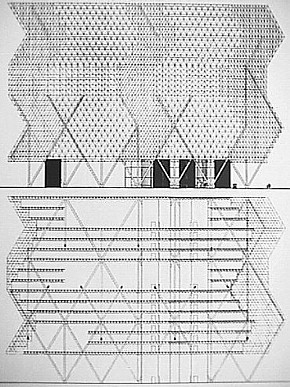
2003.05.15 13:59
Re: Life in a real museum
Metabolism as a physiological function operates via equal measures of destruction and creation, i.e., catabolism and anabolism. The metabolic is a visceral destructive/creative human process.
Perhaps Venice should be reenacted like the caves with primitive painting in them. Make the original off limits and allow the tourists to visit the facsimile.
2003.05.18 12:53
Re: logical software
...you may have in the past seen me make reference to The Timepiece of Humanity and/or chronosomatics... ...this text comprises the initial results of my 'reading' the hardware and software of the human body as an architecture delivering content.
There was also a time when I considered composing The Body, the Imagination, and Architecture were the physiological operations of the body (fertility, assimilation, metabolism, osmosis, electro-magnetism, ultra-frequent synapses) are explored as also engendering 'physiologies' of human imaginations (fertile imagination, assimilating imagination, metabolic imagination, osmotic imagination, electromagnetic imagination, ultra-frequent synaptic imagination) which were then explored as further engendering physiologically categorized architectures (fertile architecture, assimilating architecture, metabolic architecture, osmotic architecture, osmotic architecture, electromagnetic architecture, ultra-frequent synaptic architecture). There are many unpublished notes and some drawings pertaining to this project.
2003.05.28 11:20
Re: story telling
Piranesi very much utilized/executed a 'narrative' approach to design via the Ichnographia Campo Marzio, which predates Cooper Union/Hejduk by about two centuries. Moreover, Piranesi's approach may well have been inspired/influenced by the mnemonic design methodology of Hadrian's Villa at Tivoli, which comes from 1900 years ago. Story telling/weaving/fabricating (like the above) is a very basic form of reenactionary architecturism.
Is reenactionary architecturism essentially an architecture that does not forget?
| |
2003.05.30 12:39
Re: blind, without imagery
I wonder how much more elegant North, Central, and South America were in the millennia prior to 1492.
Is progress really just another word for ongoing discontent?
Then again, what if ongoing contentment is what real progress is all about?
2003.06.20 11:54
Re: WTC & Real Estate Development
Cities have always been centers/engenderers of vitality. The word vitality relates directly to life, as does (the word) metabolism. Are cities always metabolic then? To many degrees, such as the day to day goings on, the answer is yes. But what of cities and their processes in the long term? Are cities metabolic over time as well? A safe answer is that many (if not most) large cities throughout the 20th century have manifest enormous creative/destructive dualities, i.e., metabolic natures. Berlin is a perfect 20th century example, and Baghdad is well on it way to being a perfect turn-of-the-millennium example. Even (North) Philadelphia has gone from one of the largest manufacturing (creative) centers of the world in the late 19th and early 20th century to now being a large urban area where huge factory complexes are long abandoned and 'decaying' and even 'disappearing' (ultimately destroyed) month to month. Given that capitalism has itself been described as "creative destruction" (or really destructive creativity as well), any city that is likewise a center of capitalism is by default metabolic--and here the mega-cities of so-called Communist China cannot really deny their capitalist natures because of their undeniable creative/destructive natures.
All this also makes me wonder what the USA will be like when so-called 'urban sprawl' begins to age/show its ongoing metabolic nature over time. Perhaps therein lies a forthcoming perfect example of real estate development's undeniable metabolism.
2003.06.24 19:25
Index Architecture
This book should be in audio format. That way you could listen while sleeping, and after about a week you could start talking like a Columbia grad without spending all that time and money. Now that would be radical!
2003.06.25 16:50
top 5 movies with great architecture or regarding architecture
Did you know that when a depiction of Boullée is shown in The Belly of the Architect, the image is actually that of Piranesi?
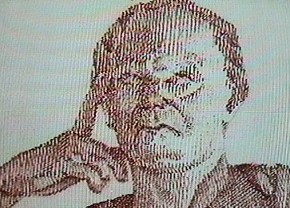
Just over a year ago there was a display within "Theatrics Times Two" at www.quondam.com that compared the symmetry of The Ruling Class with the symmetry of The Belly of the Architect. I think Greenaway was much influenced by The Ruling Class.
2003.06.26 19:29
fact check and some proof
I'd say the real shell architectures were those caves some humans used to live in, and beyond that architecture became an applied shell, and going to an(other) extreme, a space station is all shell, but hardly natural.
2003.06.26 20:02
fact check and some proof
I see your point about architectures that fulfill nomadic intentions, but I also see mobile homes, trailer parks and even just automobiles as architectures that fulfill nomadic intentions better than hotels. Hotels fit more the oasis typology/metaphor, acting as both way-station and/or destination.
2003.07.14 14:47
Re: houses saved by deconstruction or HABS
Cabinets and Museums--virtually the same exact thing. Think about it.
2003.08.07 13:08
Re: Colors of the season
The last time I purposefully read anything on color (almost 10 years ago) was John Shearman, "The Functions of Michelangelo's Color" in The Sistine Chapel: A Glorious Restoration (New York: Harry N. Abrams, 1994).
An arbitrary quotation from p. 88:
"Michelangelo's restless experimentation produces much inconsistency."
2003.08.23 13:34
Re: calendars of space, time, place
Of late, I more see (my 'brand' of) "calendrical coincidence" like a somewhat large mnemonic structure/house comprised of 365.25 rooms, one 'room' for each full planetary spin as the planet itself makes one full rotation around the sun. Many different 'events' get sorted into these individual rooms based first on the day, and then second by the year--historical events, saints days, Holy and Holidays, personal events, etc. I'm realizing it is interesting to "remember" history in this manner, where, instead of 'analyzing' events by decade or quarter or half century, for example, analysis is done by a specific day or days cutting through all solar years.
2003.08.28 10:37
Re: FW: Evolutionary theory and architecture
Paul wrote: Architects don't view the process of architecture as one of communication--of receiving and transmitting influences. They view architecture as form and understand the process as formal organization.
Steve writes: I, as an architect, indeed view a process of architecture as one of communication--of receiving and transmitting influences, hence Quondam - A Virtual Museum of Architecture where (its) architecture is the delivery of content.
2003.08.31 13:28
Re: Evolutionary theory and architecture
Going back to Alex's initial statement, "In my continuing research into the history of architecture I am continually surprised by the lack of an adequate theory of change to explain the shift from style to style. At the same time I have become increasingly aware of the power of evolutionary theory to explain the concept and mechanisms of change," I am curious which shifts from style to style are being referring to. Are they the shifts from Greek to Roman to Early Christian to Romanesque to Gothic to Renaissance to Mannerist to Baroque to Rococo to Neo-Classicism to Eclecticism to Modernism to Post Modernism to today's architecture? Furthermore, what exactly substantiates the claim that an "adequate theory of change" is lacking from the explanation of shifts from style to style?
| |
2003.09.01 11:05
Re: Evolutionary theory and architecture
...you very much got, and explained far better than I could, what I was trying to get at regarding Alex's "Evolutionary theory and architecture" proposal. A. may indeed be right about there being a lack in architectural history when it comes to explaining shifts from style to style (and this interests me greatly), but I'm not convinced so far that evolutionary theory (which ever one that may be) is the best(?) way to explain shifts from style to style.
Up until (more or less) the "International Style", architectures where very much linked to geography/locale and the politics(/religion) that comes with geography [--and here Norberg-Schulz's Meaning In Western Architecture offers good explanation]. Of course, European colonialism can be seen as an "internationalization" (or is it "globalization"?) of European/Western architecture precursing the "International Style," as well as the beginning of the eradication of many indigenous architectural styles throughout the world. Is this history best explained as evolutionary? Is the shift from Mayan architecture to Baroque architecture in Mexico, for example, something evolutionary? Not exactly survival of the fittest; more like survival of the one's with the guns and the greed, and, oh yes, the holy mission to spread the Christian faith.
Personally, I sometimes wonder whether Mayan architecture may have sometime/somehow played an influencing/inspiring role in terms of (particularly) Spanish Renaissance and Baroque architecture.
2003.09.04 18:08
in the thick of reenactment season
I purposefully walked from the front door of the Philadelphia Museum of Art down the Benjamin Franklin Parkway to the far side of Logan Circle and then back to the Art Museum. I did this to get a real sense of scale of the virtual axis of life within Piranesi's Ichnographia Campus Martius.
In reality I was walking across the forecourt of the Philadelphia Museum of Art, then down the steps that Rocky made famous running up, then across Eakins Oval, where the largest painting in the world once was, then down a tree covered allee along the south side of the Parkway stretching for three long blocks, then around Logan Circle, and then back in the direction I came although this time along the north side of the Parkway.
In virtuality I was walking through the Nympheum Neronis high on the Vatican Hill, through the Porticus Neronis, through the Templum Martis (Temple of Mars), through the Area Martis where the Triumphal Way begins its "march" [this is around where the Rodin Museum is on the Benjamin Franklin Parkway, and, as luck would have it, where the route of many of today's Philadelphia parades begin], then I walked around Hadrian's tomb, and then I walked back.
e2557a
e2567a
e2583
e2759c
e2828
e2886a
e2909b
e2965a
e3044a
e3078b
2003.09.04 19:10
Re: CFP: Museums and the Web 2004
... There's nothing fancy about the display, but I like the effect of "going through a museum" on a day by day, as opposed to room by room, basis.
[Thinking just now:] a calendrically mnemonic museum design.
2003.09.16 15:22
Re: Architecthetics Digest
What is perhaps most unique about contemporary aesthetics is that there are a whole lot of aesthetics to choose from. There is no predominate aesthetic on the planet today, especially not an aesthetic that predominates for any prolonged length of time and/or over any large portion of the planet. Then again... Maybe delusional characterizes the predominate, yet at the same time most denied, aesthetic of our time.
2003.09.26 16:22
metabolism
On the occasion of the World Design Conference held in Tokyo in 1960, a group of young 30-something Japanese architects proposed "metabolism" as a new 'ism' for architecture and urban planning. Their idea was quite simple: architecture and the city should constitute an open living organism that grows through metabolism, instead of an enclosed, static machine.
Arika Asada and Arata Isozaki, "From Molar Metabolism to Molecular Metabolism" in Anyhow (1998).
What the Metabolists failed to realize is that metabolism (as a physiological operation) is a creative/destructive duality, hence, metabolism does not define a continuous organic growth, as much as growth integral with equal measures of destruction.
Schumpeter called capitalism "creative destruction," which, if correct, essentially labels capitalism as being metabolic. There is no question that we live in very metabolic times. Unfortunately, most (product) designers today (seem to) remain oblivious to the fact that what is great design today will soon enough be tomorrow's trash.
2003.09.26 17:02
architecture and accidents
"...check out some of Peter Eisenman's work. It has an accidental quality--he sets up processes and systems and kicks back and waits to see what happens."
As just described, Eisenman's methodology is then a process of intended serendipity rather than a process of pure accident.
2003.10.05 14:47
Re: the McMansion Effect ((space))
Re: test (poem?) by whomevers
date: Sat, 17 Apr 1999 07:44:29
[architecture as interface comes with the architecture of schizophrenic interfacing...]
[buildings constantly move, doors can be windows, windows can be doors, stairs to Pilate are climbed annually on knees, walls may soon all talk, floors will mostly remain flat, ceilings with sprinklers are virtual skies that harbor emergency rain, roofs probably more than anything manifest architecture's shape, lights, camera, Africa, machines to create architecture with, furniture and painting as one, utilities that never fail (sic), plants, of course, grass gets high, sidewalk, siderun, sidecrawl, sidesit, sideroll-over, driveway complete with Jeep, garage sale as museum,..]
2003.10.05
..and then there's all the stuff that is now created and stored digitally, which sometimes gets put in digital museums.
Are the large homes and all their contents of today something like subliminal evocations of museums? "A man's home is his castle." And just look at how many actual castles and palaces are now actual museums.
"I want a McMuseum, hypersized."
Take a moment or two to count the 'collections' presently in your home.
[Could Quondam or Museumpeace get in the business of designing and executing museums for anyone that virtually wants one?]
joke from the early 1980s:
A: What comes after museum?
Q: pre-shrine
In terms of my personal aspiration to be both an architect and an artist, it is precisely via museums that my goals are fulfilled. I never imagined I'd then also become a hyper-writer in the process, however.
| |
2003.10.13 22:46
let's hear your architecture haiku
the designers think
they design good looking stuff
tuition said so
031017a Parkway Interpolation plans models
2278i04
b
c
2003.10.22 11:38
Re: the venturi influence
You make these broad stroke statements like "hardly anyone paid attention to that slim volume first published in 1966" as if you know this as fact--and because of this you lose integrity as any kind meaningful critic. I know I was paying attention to Complexity and Contradiction in Architecture when I was a freshman in high school 1970-71.
03111201 Center City Philadelphia Parliament Building of West Pakistan etc. plans
2330i02
03111202 B.F. Parkway Basilica Sessorianum City Hall Porticus Neroniani etc. plans
2330i03
031113a Benjamin Franklin Parkway ICM Altes Museum House 10: Museum Parliament of West Pakistan
2120i17
031113b various plans along Benjamin Franklin Parkway
2070i03
2003.11.15 13:50
Re: Is it the end of theory?
The 'theory' that I utilize most now-a-days in terms of guiding/informing my design actions centers on the notion that the virtual realm is an 'other' place to work within as an architect and/or artist. The virtual realm (whose infrastructure is now largely the Internet and the general wired-ness of our planet) is a place additional/optional to the real realm. Although many current theories (and realities) see the real and the virtual merging in our daily lives, I more enjoy investigating the virtual realm in its more extreme position (which exists regardless of whether or not there is concurrent merging of the real and virtual going on).
2003.11.21 16:24
Re: Virtual and Real
Quondam - A Virtual Museum of Architecture celebrates its 7th anniversary online today.
The weather in Philadelphia today is gorgeous, and I was going to visit the closest real museum to me--Ryerss Museum and Library--to look at a pieces of the Coliseum and the Great Wall and even the full contents of a Japanese Buddhist Temple. The Ryerss Mansion is a wonderful example of a house that morphed into a museum, and the contents of the museum are all the things that the last residents of the Ryerss Mansion purchased about 100 years ago as they traveled around the world, particularly through the Orient. For a couple of years now I like to refer to the Ryerss Museum as a "Museum of Someone's [Global] Shopping." I didn't make it to Ryerss, though, because my trip to the bank, the post office (sending things to eBay shoppers in New York and Italy), and the supply store took longer than expected. I might go to Ryerss tomorrow or Sunday, however.
2003.12.02 17:21
so much for Liberty...
Although the quondam Liberty Bell Pavilion of Independence Historic National Park (Philadelphia) is officially for sale, the Park Service has nonetheless found a new (interim?) use for the building. It is now the security checkpoint for visitors to the Liberty Bell that is in the adjacent new Liberty Bell building. Today, while looking inside the former Liberty Bell Pavilion, I saw a man with outstretched arms being "checked" by a Park Ranger with a hand-held scanner right in front of where the Liberty Bell used to be with Independence Hall clearly in the background. Like they say, "Only in America."
2003.12.03 17:36
so much for liberty...
The point of this thread is... ...the ironic symbolism currently manifest by the architecture at Independence Historic National Park.
Security checkpoints at IHNP are a post-911 phenomenon, and, as far as their 'design" there goes, they are makeshift and poorly executed. Using the former Liberty Bell Pavilion now also as a checkpoint adds symbolic absurdity to the mix.
Granted this may all be temporary, but, if you are mindful of all the 200+ year history of this specific site, there's not much about it that hasn't just been temporary, or indeed ironic about the literal birthplace of the United States of America.
Perhaps the reason it is so difficult these days to design a decent memorial is because architects for almost a century now are more trained at designing oblivion.
031203a museums plans
2120i18
031203b museum plans Benjamin Franklin Parkway
2120i19
031203c House 10: Museum at Calder Museum site plans
2197i03
b
031206a Center City Philadelphia Ara Martis plans
2330i06
031207a Center City Philadelphia with ICM plans
2093i07
031207b Center City Philadelphia with ICM plans
2093i08
031207c Center City Philadelphia with ICM plans
2093i09
031208a Center City Philadelphia Altes Museum Palais des Congrès
2120i20
031208b B.F. Parkway model PMA flat columns
2142i01
2003.12.11 16:47
Avant Garde Murder Mystery Solved!
It was Ms. Clear-Gesso, in the lobby, with the paintbrush
2003.12.13 16:42
which Acropolis do you prefer?
The Acropolis as used by the ancient Greeks?
The Acropolis as used by the ancient Romans?
The Acropolis when the Parthenon was used as a Christian Church dedicated to Mary?
The Acropolis when the Turks used the Parthenon as a munitions magazine (hence the 17th century explosion that pretty much wrecked the place)?
The Acropolis as mass tourist destination with the Parthenon ruins slowly being further destroyed by air-pollution?
Multiple choice, I'm sure.
031213a PMA model flat columns
2142i02
031213b Benjamin Franklin Parkway model
2330i08
b
031214a Palais des Exposé model
2321i03
031214b Palais des Exposé model Philadelphia context
2321i04
b
c
031214c Palais des Exposé perspective
2321i03
031214d Palais des Exposé perspectives
2321i04
2003.12.14 17:42
Re: which Acropolis do you prefer?
The explosion of the Parthenon occurred 26 September 1687. It would be interesting to know how many people on Earth 316 years from now will know the date of the attack on the World Trade Center off the top of their head.
Collective memory is a lot more selective than criticism.
For how long did the 'ideal' design of the Acropolis actually exist? Moreover, do we even fully understand what the Acropolis was really like while it manifest it's most ideal existence. For example, how was it all painted? Did a fair amount of the ideal design actually fade as soon as the colors did?
031215a Palais des Congrès ICM plans
2330i09
031215b ICM plans
031215b Benjamin Franklin Parkway ICM plans
2330i10
031215c Palais des Congrès Horti Domitiae perspective
2198i12
2003.12.30 16:08
Rem Koolhaas and OMA-AMO
At the In Your Face symposium at NYU 29 September 2001, featuring Robert Venturi, Denise Scott Brown, Rem Koolhaas and others, I questioned Venturi about his unsureness regarding 'content' when it came to building facades that were also screens that present electronic imagery--Venturi pioneered this idea back in the 1960s with an unexecuted design for the Football Hall of Fame. My point was that if architects design buildings where (some of) the facades are screens, that it might also be the 'job' of the architect to provide the content to be 'screened', or at least provide some sort of direction to how the screen facades might be fully utilized. After a full exchange with both Venturi and Scott Brown, the moderator of the symposium asked Koolhaas if he had any additional thoughts on this topic, to which Koolhaas replied, "I am not interested in discussing 'content'." Koolhaas has since then obviously changed his mind because the whole theme of the Koolhass/OMA/AMO exhibit presently at Berlin, and the title of Koolhaas' forthcoming book, is indeed Content.
It was soon after late September 2001 that Quondam, a virtual museum of architecture, began defining itself as "architecture as the delivery of content."
|